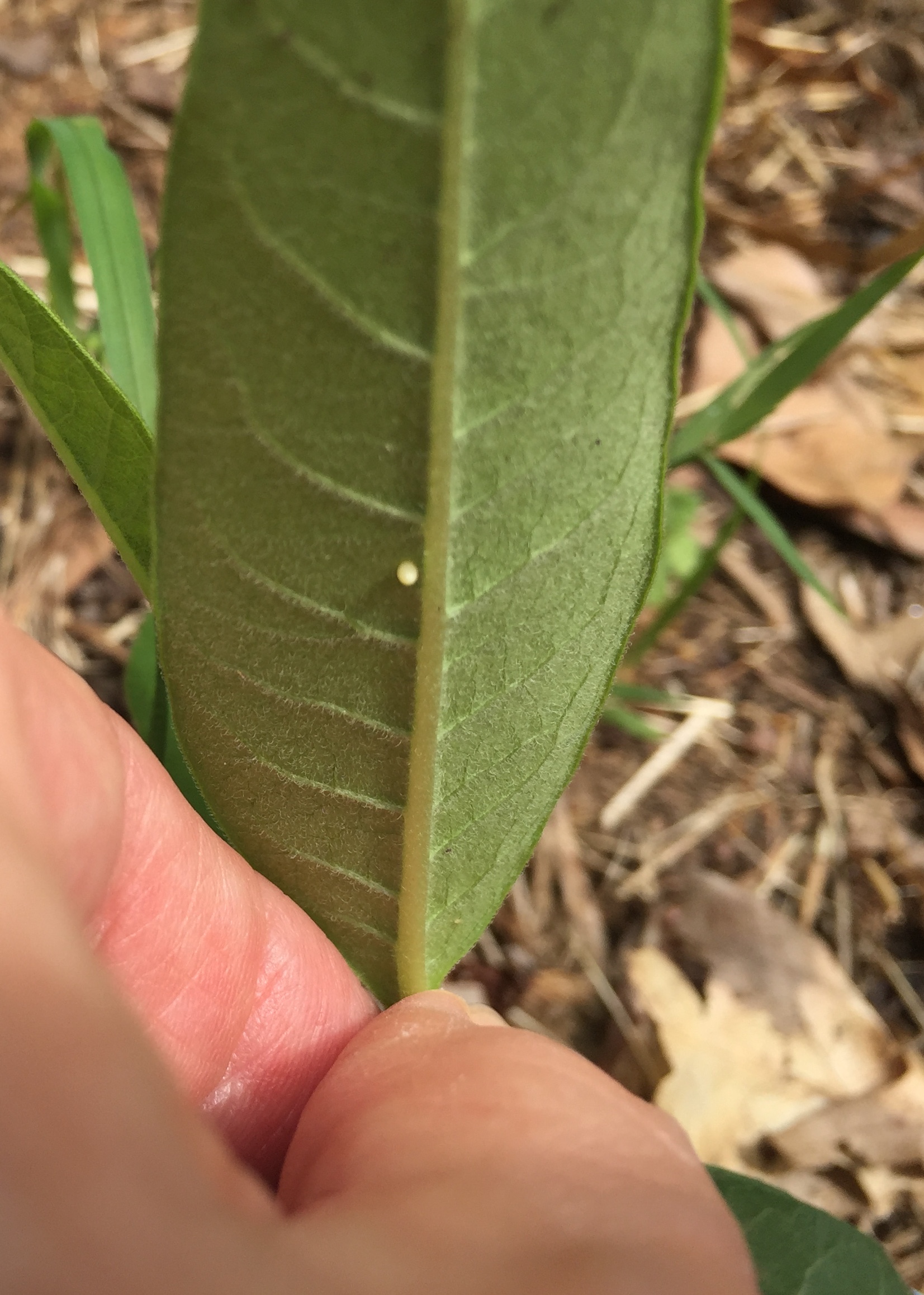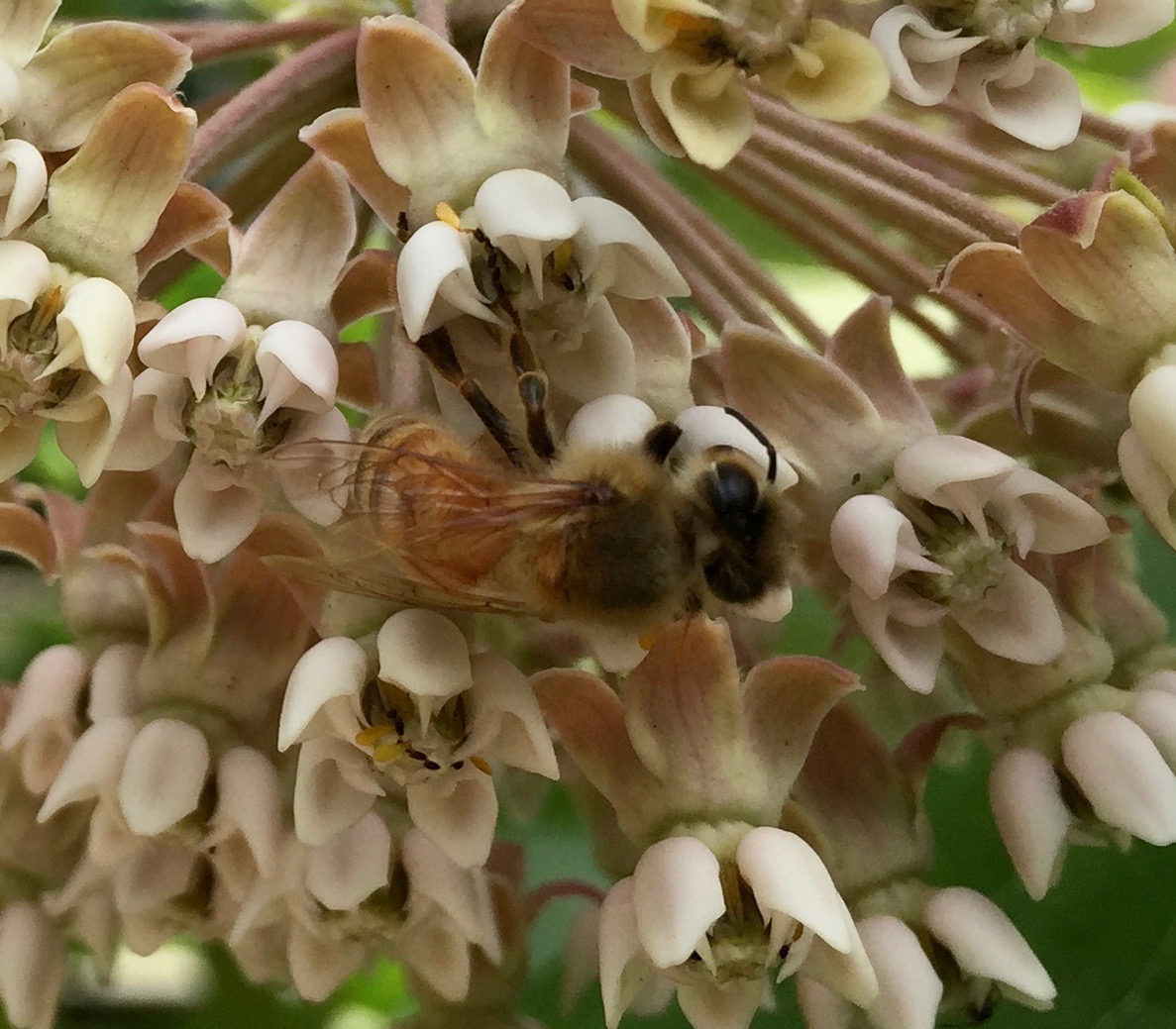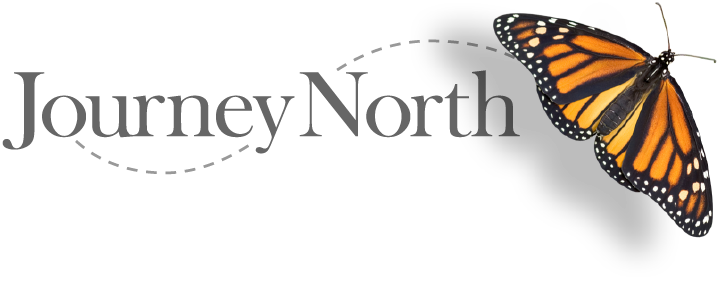Monarch “firsts”
By Peggy Ashbrook
Posted on 2019-06-18

It’s amazing how much animal life a small patch of ground can sustain. Over the last three weeks in the row house yard there have been Black swallowtail butterfly larvae (caterpillars) on a fennel plant; isopods (roly-polies/pillbugs), slugs, and centipedes under the flower pots; Cabbage white butterfly larvae on the kale, Milkweed Leaf beetles on the milkweed plants; and a Monarch butterfly laying two eggs on a milkweed plant.

Plus many kinds of bees on the flowers, ants between the patio bricks and on the trumpet vine flowers, a few spiders resting in webs, flies buzzing around, and different kinds of birds at a feeder. There are likely to be many other kinds of animals that did not show themselves.
The first sighting of Monarch butterflies is exciting because they are one of the animals that migrate seasonally so they may not be in your area for very long. Scientists encourage citizen scientists to report their “firsts” data of when and where they first see an adult butterfly, milkweed emerge in the spring, monarch eggs, and monarch larvae (caterpillar).

Journey North, a citizen science program, provides tools on the website for us to record our data, helping scientists understand the monarch’s conservation needs (as well as American Robins, hummingbirds, frogs, and other living organisms). Data recorded year round is helpful!

Read about planting a garden that will sustain butterflies, and all about Monarch biology, rearing, milkweed cultivation, and migration on the Monarch Watch website, another program dedicated to the conservation of Monarch butterflies.
Those two Monarch eggs on a small milkweed plant are now in a “butterfly house” at a preschool with plenty more milkweed for those very hungry caterpillars when they hatch out. The children will maintain the butterfly house, observe the caterpillars as they eat, grow, and pupate before emerging from their chrysalids as adult Monarch butterflies.
Disclaimer: The views expressed in this blog post are those of the author(s) and do not necessarily reflect the official position of the National Science Teaching Association (NSTA).


